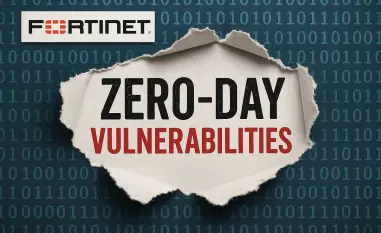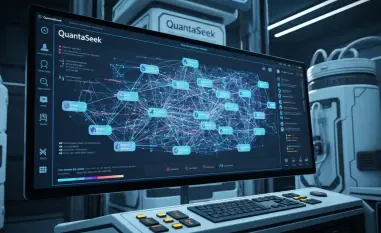Overview of the N-able N-central Cybersecurity Crisis
Imagine a critical tool, relied upon by thousands of managed service providers (MSPs) to oversee vast IT infrastructures, suddenly becoming a gateway for cybercriminals. This is the alarming reality facing N-able N-central, a prominent remote monitoring and management (RMM) solution integral to the operations of IT teams worldwide. Its role in enabling seamless oversight of networks, servers, and endpoints has made it a cornerstone for MSPs, ensuring business continuity and efficiency across diverse sectors.
The widespread adoption of N-central, however, positions it as a prime target for malicious actors seeking to exploit vulnerabilities for access to sensitive systems. With a user base spanning numerous industries, any breach in this platform can ripple through entire supply chains, affecting countless clients. The stakes are high, as a compromised RMM tool can grant attackers a foothold into multiple organizations simultaneously, amplifying the potential damage.
In the broader RMM industry, N-able stands alongside competitors like ConnectWise and Kaseya, all of whom face increasing scrutiny over cybersecurity. As digital transformation accelerates, the reliance on such tools grows, making robust security measures non-negotiable. This crisis underscores a pivotal moment for the sector, where the balance between operational efficiency and safeguarding against threats must be urgently addressed.
Details of the Exploited Vulnerabilities
Nature and Impact of the Flaws
At the heart of this issue are two severe vulnerabilities in N-able N-central, identified as CVE-2025-8875, an insecure deserialization flaw, and CVE-2025-8876, a command injection bug. These defects can potentially allow attackers to escalate privileges and fully compromise self-hosted instances of the software. Such exploitation could enable unauthorized access to critical systems, posing a grave threat to the integrity of managed IT environments.
The strategic importance of N-central in overseeing infrastructure for MSPs and their clients heightens the risk. A successful attack could not only disrupt operations for service providers but also expose downstream businesses to data breaches or ransomware. This interconnected vulnerability makes the flaws a significant concern for the entire IT ecosystem reliant on centralized management tools.
N-able has reported limited confirmed exploitation targeting some customers, though there is no evidence of attacks impacting hosted cloud environments. This distinction suggests that self-hosted deployments are particularly at risk, necessitating immediate attention. The company’s ongoing investigation aims to uncover further details, but the initial findings already signal a pressing need for action.
Scope of Exposure and Global Distribution
Data compiled by The Shadowserver Foundation reveals a staggering number of unpatched N-central instances exposed to the internet. As of August 17, over 870 deployments remained vulnerable, a slight decrease from 1,077 recorded just two days earlier on August 15. This reduction indicates some progress, yet the scale of exposure remains alarmingly high given the severity of the flaws.
Geographically, the distribution of these at-risk systems spans multiple continents, with the United States bearing the largest share at 367 instances. Following closely are Canada with 92, the Netherlands with 84, Australia with 74, and the United Kingdom with 72 vulnerable deployments. This global spread highlights how widespread reliance on N-central intersects with varying levels of cybersecurity preparedness across regions.
The international scope of this issue amplifies the urgency for a coordinated response. With critical infrastructure under potential threat in numerous countries, the need to secure these systems transcends borders. Delays in addressing the exposure could embolden attackers to exploit the situation on a larger scale, making rapid mitigation a top priority for affected organizations.
Challenges in Patching and Risk Mitigation
The persistence of over 870 unpatched N-central instances, despite the availability of fixes in version 2025.3, reflects a chronic challenge in the cybersecurity landscape: timely patching. Many MSPs and IT teams struggle to implement updates swiftly, leaving systems exposed to known threats. This lag creates a window of opportunity for adversaries actively seeking to capitalize on disclosed vulnerabilities.
Several factors contribute to these delays, including the operational complexity of deploying patches across diverse environments. Additionally, limited resources or a lack of awareness about the urgency of specific updates can hinder prompt action. For smaller MSPs, balancing daily operations with security tasks often results in critical updates being deprioritized, exacerbating the risk.
To counter this, strategies such as prioritized patch deployment and enhanced monitoring of internet-facing systems are essential. Organizations must also invest in training to ensure staff are equipped to respond quickly to alerts about exploited flaws. By fostering a proactive stance, MSPs can reduce the likelihood of breaches and safeguard the broader networks under their management.
Regulatory Response and Industry Implications
The U.S. Cybersecurity and Infrastructure Security Agency (CISA) has taken decisive action by adding both N-central vulnerabilities to its Known Exploited Vulnerabilities (KEV) catalog on August 13. This move underscores the severity of the threat and signals a call for immediate remediation. Federal agencies have been mandated to apply patches by August 20, setting a tight deadline to curb potential damage.
This regulatory response serves as a benchmark for the private sector, highlighting the importance of swift compliance with security advisories. CISA’s involvement emphasizes that vulnerabilities in widely used tools like N-central are not merely technical issues but matters of national concern, especially when critical infrastructure is at stake. The directive aims to prevent widespread exploitation by ensuring government systems are protected.
Beyond immediate mandates, this incident raises broader questions about compliance and security standards in the RMM industry. MSPs must adopt more rigorous cybersecurity practices to meet evolving expectations and protect their clients. The event may prompt regulators to impose stricter guidelines, pushing the sector toward greater accountability and resilience in the face of emerging threats.
Future Outlook for RMM Tools and Cybersecurity
As cyber threats grow in sophistication, the future of RMM tools like N-central hinges on their ability to adapt to an increasingly hostile digital environment. The current crisis serves as a stark reminder that these platforms, while essential for efficiency, are also prime targets for attackers. Developers and providers must prioritize security as a core component of their offerings over the coming years.
Emerging technologies, such as automated patching systems and advanced threat detection powered by artificial intelligence, hold promise for bolstering defenses. These innovations could minimize human error and accelerate response times to newly discovered flaws. Integrating such capabilities into RMM solutions may become a competitive differentiator, shaping market dynamics from now through 2027 and beyond.
Regulatory pressures and global cybersecurity trends will likely further influence the evolution of RMM software. Stricter standards and international collaboration on threat intelligence could drive the industry toward more unified security protocols. As MSPs navigate this landscape, fostering a culture of vigilance and continuous improvement will be crucial to staying ahead of adversaries.
Closing Thoughts
Reflecting on the challenges faced during this N-able N-central vulnerability crisis, it became evident that delays in patching exposed critical weaknesses in the cybersecurity posture of many organizations. The scale of unpatched instances, combined with confirmed exploitation, painted a sobering picture of the risks inherent in managing complex IT tools. This episode served as a wake-up call for the industry to reassess its approach to rapid threat response.
Looking ahead, actionable steps emerged as a clear path forward. Administrators were urged to prioritize immediate patch application, leveraging available updates to secure systems. Simultaneously, investing in automated tools and training promised to build long-term resilience against similar incidents. These measures aimed to close the gap between vulnerability disclosure and effective mitigation.
Beyond individual action, a collective shift in mindset was deemed necessary. Industry stakeholders needed to advocate for standardized best practices and enhanced collaboration on threat intelligence. By fostering such unity, the RMM sector could better anticipate and neutralize future risks, ensuring that tools designed for efficiency no longer doubled as entry points for cyber threats.













